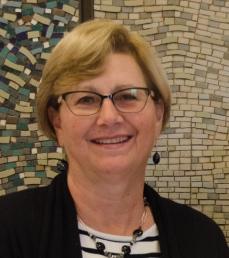
supporting local Artists

supporting local Artists

If you haven’t yet met Canadian born glass bead artist, Wendy Hitchins, make sure you do not miss either the Warragul Arts Market Wendy also participates in Open Studios West Gippsland (a self-guided studio tour of select artists) twice a year where you can watch her make beads in her studio. She’s a regular stallholder at the Festival of Glass in Drysdale the third Sunday of February. And she has been commissioned to make a piece for the Festival of Glass Treasure Hunt.
Wendy has always had an interest in the arts and crafts since the time her grandmother first taught her to knit. She then taught herself crochet and macramé and continued on that path for many years adding in cross-stitch and embroidery along the way. Wendy says from the time she tried making her first glass bead she became hooked on melting glass. Again, I taught myself how to make beads from books as I lived in the country and accessing classes wasn’t practical.
While Wendy’s major material is glass she also works in copper and enamel. She loves working with glass because molten glass has a mind of its own and will often lead her to create something new and unique. There is a sort of zen quality to making beads. Each bead I make is a piece of wearable art. I love commissions and the challenge of interpreting a customer’s idea.
Every artist seeks to create unique works stamped with their distinctive style and Wendy is no different. She has a focus on lampwork beads which are incorporated into one off designer pieces of jewellery. Wendy uses the lampwork beads to provide a unique focal point and clarifies this: I like to make non-traditional glass beads. I’m not much into making flower beads but rather funky, organic style beads. All that Wendy achieves has been without any formal training. She perseveres, experiments, and accesses workshops conducted by international artists in lampworking, such as world-renowned Melbourne lampwork artist, Pauline Delaney, American master, James Smircich, and most recently with acclaimed artist, Corinna Tetinger.
While Wendy gains inspiration from such artists it comes too, from travel around Australia, the landscape around her including patterns, colours or sometimes it’s just an idea that usually springs up in my mind while I’m asleep. I usually work towards an ‘effect’ rather than recreating something I’ve seen.
She is also inspired by fashions of the 1800s and 1900s. While Wendy believes she is not much for sketching out her designs she usually has an idea forming while making her beads. From there she lays it out, matching colours and textures until she is happy and able to visualize the finished piece. I can be very critical of my work and often think something I’ve just made isn’t good enough or I don’t like it at all when it’s done. I have to remind myself to just let it go and not stress.
She was successful in entering a piece in the U.S. based International Society of Glass Beadmakers’ juried show a few years ago. The theme of this exhibition was to make a piece of jewellery for a famous person, past, present or beyond. The necklace sold while on its journey around America. That was a special thrill. Wendy chose Frida Khalo after much deliberation, partly because Frida was so influential in the artistic and fashion world. As a result of this her favourite piece is Frida. Wendy explains the piece: I did quite a bit of research on Frida before deciding on the style of bead. However, I knew right away I wanted to work with the colour turquoise. She was famous for wearing lots of necklaces at once. She loved bright colours. After experimenting I decided on turquoise and orange. Then I added copper wire and semi-precious stones in the finished piece.
In February 2008, Wendy was placed third in the lampwork division of an Australian competition sponsored by the national magazine Beads, etc. Of entering competitions Wendy states that Sometimes, as in any craft, you run out of inspiration. A competition can give me a new direction. I like the challenge of a competition because it can often take me out of my comfort zone. It makes me look at what I make and how I make it differently. I think I grow a little bit when I take on that challenge.
As a result of her critique of her own work Wendy has noticed a huge change in what she creates. I used to make very small beads. Partly because I was still a little scared of working with a flame. Now I’ll give anything a go. I feel more confident in what I’m making. As for the future, I’m certain I’ll continue to change. I cannot see a time when I won’t be making something but what will that be? We’ll have to wait and see.
Lampwork process
Lampworking is the art of melting glass in a flame of oxygen and LPG. I use a special torch which combines the two fuels to create a very hot, blue flame that can be turned up or down depending on the application. Lampworking has been around for thousands of years. An oil lamp was used with a bellows to introduce oxygen into the flame. Some call the process flameworking too.
To create the beads, I use a special torch, an oxygen concentrator and LPG. I melt the glass around a stainless steel mandrel which has been dipped in a special clay solution that keeps the hot glass from sticking to the mandrel. The glass comes in rods about the circumference of a drinking straw. As I melt the glass rods I’m winding the molten glass around the mandrel. It’s a bit like working with honey when the glass is molten. To create a bead, I make the background first and the final pattern is added last.
Once a bead is finished, it must be annealed in a kiln. Some people make the beads and anneal later. I like to ‘garage’ my beads in the kiln as I go. Beads are annealed at 520°C and they must sit or soak at that temperature for at least 20 minutes before slowly cooling overnight. As you can imagine, when the outside of the hot glass begins to cool, the inside is still molten and this causes stress on the glass and potentially a crack. Annealing slows the cooling rate down so the inside and outside catch up to each other releasing the stress on the glass. All good handmade beads should be annealed.
There are lots of other tools I use in the creation of my beads. Sometimes I use specially made brass presses. My most used tool is a graphite marver which helps me shape the bead and hot glass won’t stick to the graphite.